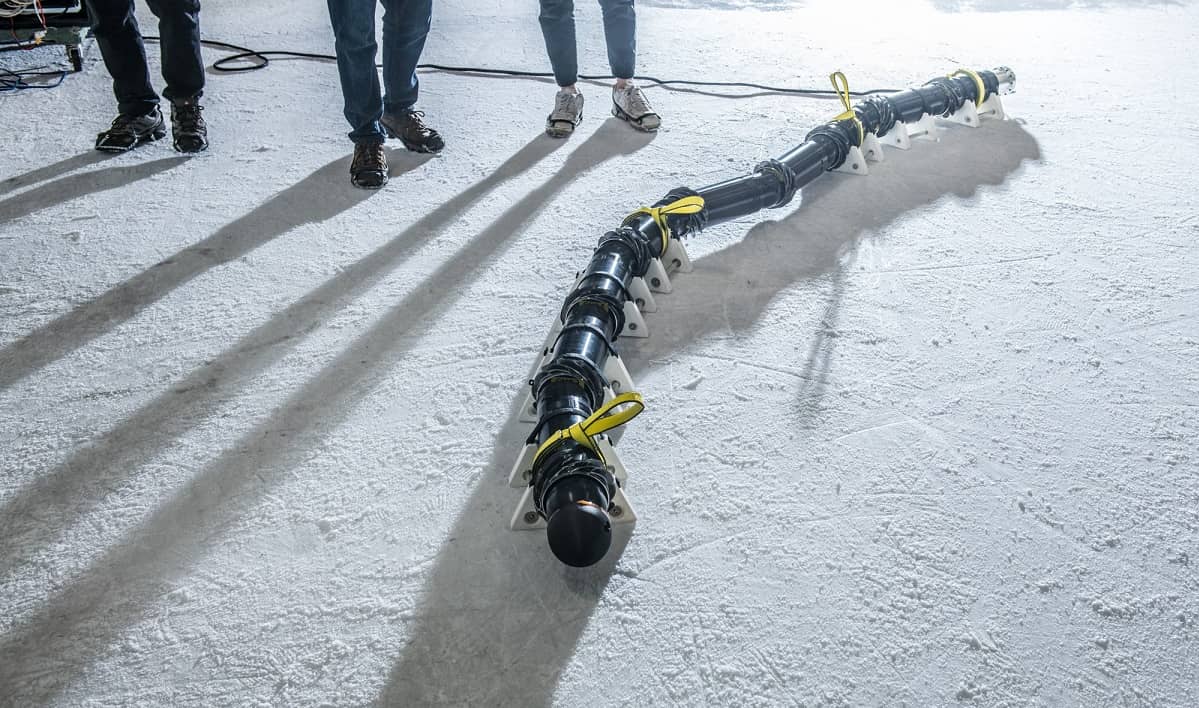One of the (at least) 83 moons that surround Saturn, is among the best candidates for finding life beyond Earth. In an attempt to find out, NASA scientists aim to deploy a big serpentine robot to search Enceladus, both above and below its icy surface—possibly even within a hidden ocean beneath.
Exobiology Extant Life Surveyor (EELS) prototype is almost finished, thanks to engineers and researchers. The 200-pound, 16-foot-long snake-like robot can move through water and on land thanks to “first-of-a-kind rotating propulsion units,” according to NASA’s Jet Propulsion Laboratory. Depending on the requirements of the environment, these repeating components could serve as tracks, grasping devices, or underwater propellers. To record its extraplanetary journey, the “head” of EELS also has 3D mapping technology and real-time video recording and transmission capabilities.
Theoretically, EELS would travel across Enceladus’ surface in search of one of the moon’s numerous “plume vents,” which it could then enter to find a route to the oceanic source. During the Cassini space probe’s orbit around Saturn, more than 100 of these vents were found around Enceladus’ southern pole. Since then, scientists have discovered that the cracks sent water vapor into space that contained amino acids, which are essential for the development of life.

“The EELS system is a mobile instrument platform conceived to explore internal terrain structures, assess habitability and ultimately search for evidence of life,” NASA says of its development. “It is designed to be adaptable to traverse ocean-world-inspired terrain, fluidized media, enclosed labyrinthian environments and liquids.”
NASA researchers have already tested EELS in a variety of settings, including an ice skating rink in Pasadena, California, and even a trip to the Athabasca Glacier in Canada’s Jasper National Park, to evaluate its mobility. The team expects to show a finished idea by the fall of 2024, assuming everything goes according to plan. But you’ll have to wait a bit to see it in action on Enceladus—EELS’s trip to the enigmatic moon is expected to take about 12 years.
The robotic prototype, even if it never gets there, could be very helpful closer to and even on Earth. According to the Jet Propulsion Lab, EELS may be useful for exploring Earth’s ice sheet crevasses as well as the polar caps of Mars.





